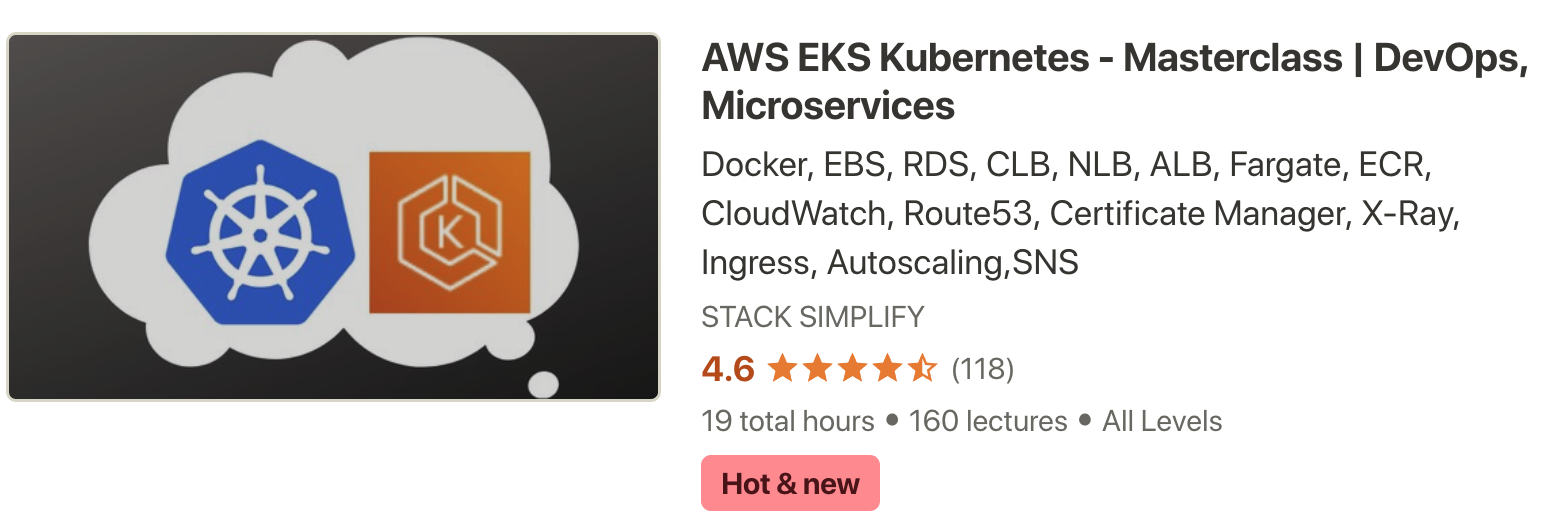Kubernetes - Services ¶
Step-01: Introduction to Services ¶
- Service Types
- ClusterIp
- NodePort
- LoadBalancer
- ExternalName
- We are going to look in to ClusterIP and NodePort in this section with a detailed example.
- LoadBalancer Type is primarily for cloud providers and it will differ cloud to cloud, so we will do it accordingly (per cloud basis)
- ExternalName doesn't have Imperative commands and we need to write YAML definition for the same, so we will look in to it as and when it is required in our course.
Step-02: ClusterIP Service - Backend Application Setup ¶
- Create a deployment for Backend Application (Spring Boot REST Application)
- Create a ClusterIP service for load balancing backend application.
# Create Deployment for Backend Rest App kubectl create deployment my-backend-rest-app --image=stacksimplify/kube-helloworld:1.0.0 kubectl get deploy # Create ClusterIp Service for Backend Rest App kubectl expose deployment my-backend-rest-app --port=8080 --target-port=8080 --name=my-backend-service kubectl get svc Observation: We don't need to specify "--type=ClusterIp" because default setting is to create ClusterIp Service. -
Important Note: If backend application port (Container Port: 8080) and Service Port (8080) are same we don't need to use --target-port=8080 but for avoiding the confusion i have added it. Same case applies to frontend application and service.
-
Backend HelloWorld Application Source kube-helloworld
Step-03: NodePort Service - Frontend Application Setup ¶
- We have implemented NodePort Service multiple times so far (in pods, replicasets and deployments), even then we are going to implement one more time to get a full architectural view in relation with ClusterIp service.
- Create a deployment for Frontend Application (Nginx acting as Reverse Proxy)
- Create a NodePort service for load balancing frontend application.
- Important Note: In Nginx reverse proxy, ensure backend service name
my-backend-serviceis updated when you are building the frontend container. We already built it and put ready for this demo (stacksimplify/kube-frontend-nginx:1.0.0) - Nginx Conf File
server { listen 80; server_name localhost; location / { # Update your backend application Kubernetes Cluster-IP Service name and port below # proxy_pass http://<Backend-ClusterIp-Service-Name>:<Port>; proxy_pass http://my-backend-service:8080; } error_page 500 502 503 504 /50x.html; location = /50x.html { root /usr/share/nginx/html; } } - Docker Image Location: https://hub.docker.com/repository/docker/stacksimplify/kube-frontend-nginx
- Frontend Nginx Reverse Proxy Application Source
# Create Deployment for Frontend Nginx Proxy kubectl create deployment my-frontend-nginx-app --image=stacksimplify/kube-frontend-nginx:1.0.0 kubectl get deploy # Create ClusterIp Service for Frontend Nginx Proxy kubectl expose deployment my-frontend-nginx-app --type=NodePort --port=80 --target-port=80 --name=my-frontend-service kubectl get svc # Capture IP and Port to Access Application kubectl get svc kubectl get nodes -o wide http://<node1-public-ip>:<Node-Port>/hello # Scale backend with 10 replicas kubectl scale --replicas=10 deployment/my-backend-rest-app # Test again to view the backend service Load Balancing http://<node1-public-ip>:<Node-Port>/hello
Pending Topics ¶
- We will look in tho these items when we progress in to course on that respective cloud provider
- LoadBalancer
- ExternalName
